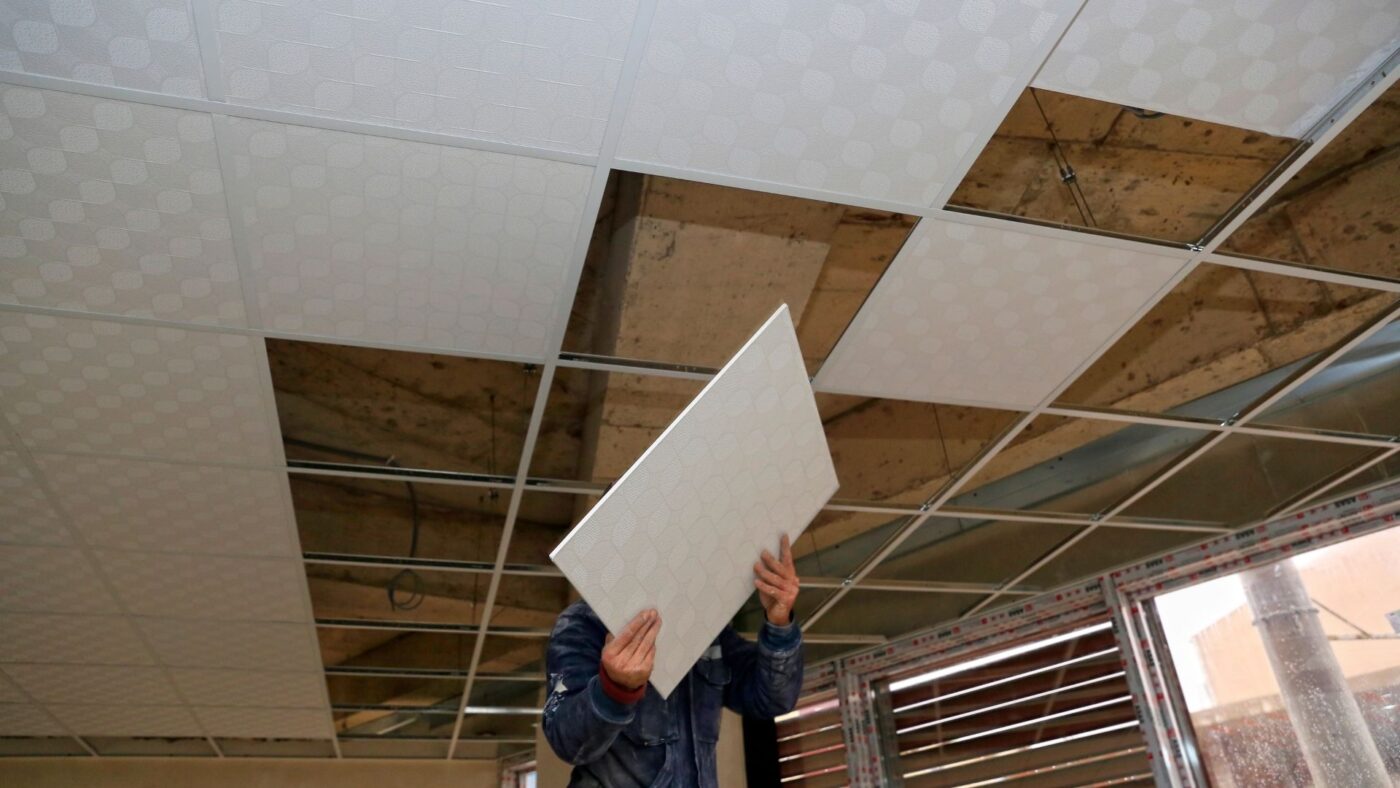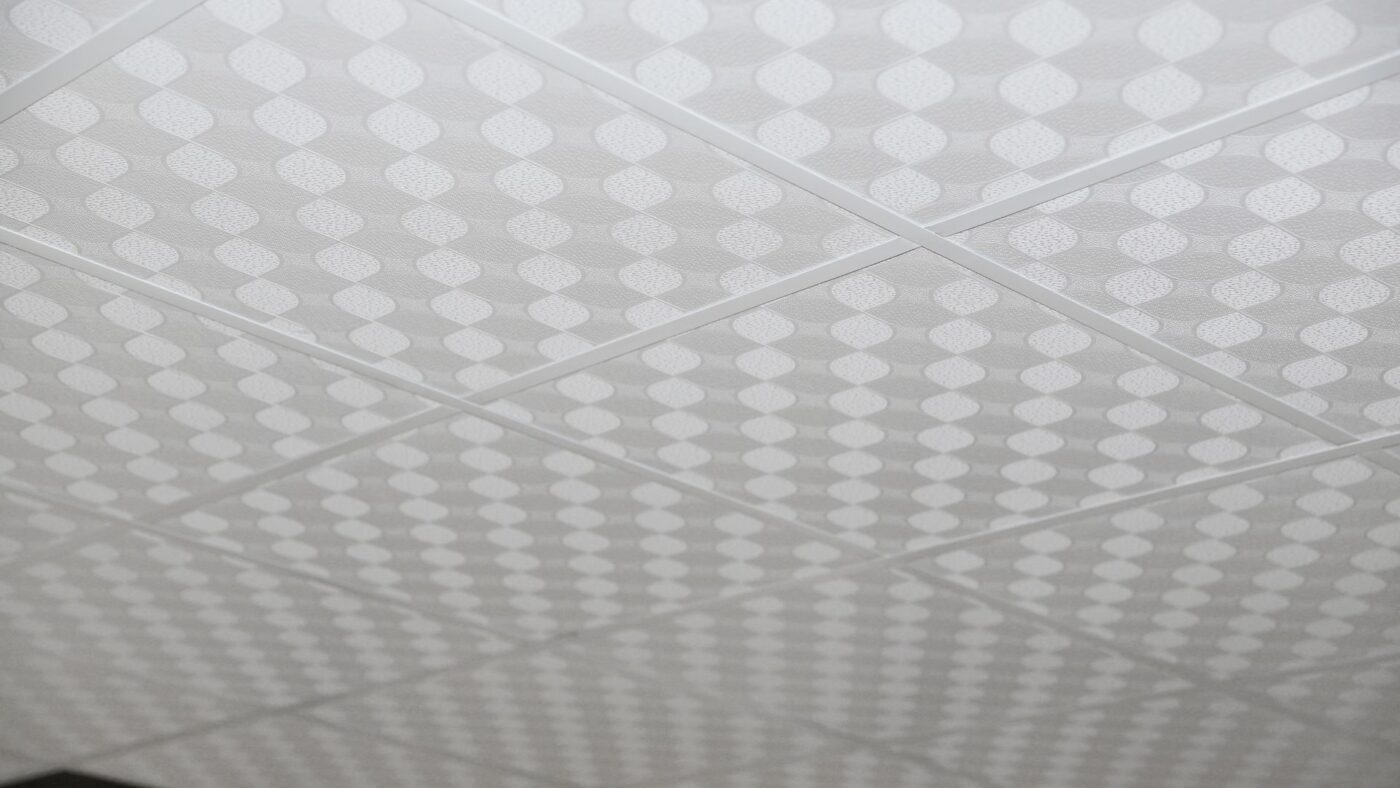When it comes to transforming interior spaces, suspended ceilings have emerged as a popular choice due to their aesthetic appeal, functionality, and cost-effectiveness. Suspended ceilings, also known as drop ceilings or false ceilings, offer a versatile and practical solution for concealing structural elements, enhancing acoustics, and improving the overall ambiance of a room. In this comprehensive blog, we will delve into the concept of the cheapest suspended ceilings, exploring the various options available, their affordability, and the benefits they bring to your space.
Understanding Suspended Ceilings
A suspended ceiling is a secondary ceiling that hangs below the primary ceiling using a grid system, typically made of metal T-shaped main runners and cross T-shaped tees. Ceiling tiles are then placed within the grid to create a finished surface. These tiles are available in various materials, such as mineral fiber, metal, gypsum, or PVC, each offering distinct advantages in terms of aesthetics, acoustics, and fire resistance.
Cheapest Suspended Ceiling Options
When exploring the cheapest suspended ceiling options, several factors come into play, such as the type of ceiling tiles, the installation method, and the size of the space to be covered. Here are some of the most budget-friendly choices:
-
Mineral Fiber Ceiling Tiles: Mineral fiber ceiling tiles are a cost-effective choice for suspended ceilings. They offer good acoustic performance, sound absorption, and fire resistance, making them suitable for a wide range of applications, including offices, schools, and commercial spaces.
-
PVC Ceiling Tiles: PVC ceiling tiles are a budget-friendly option known for their lightweight and moisture-resistant properties. They are a practical choice for areas with high humidity, such as bathrooms and kitchens.
-
Gypsum Ceiling Tiles: Gypsum ceiling tiles provide a more refined and elegant appearance compared to other budget options. They are known for their fire-resistant properties, making them a safe choice for various spaces.
-
Direct-Mount Ceilings: For those seeking an even more cost-effective solution, direct-mount ceilings eliminate the need for a suspended grid system. Instead, the ceiling tiles are directly attached to the primary ceiling surface, offering a simple and economical option.
Factors Influencing Cost
While suspended ceilings are generally considered a cost-effective choice, several factors can influence their overall cost:
-
Ceiling Tile Material: The material of the ceiling tiles plays a significant role in determining the cost. Higher-end materials, such as metal or wood, may be more expensive compared to mineral fiber or PVC tiles.
-
Design Complexity: Intricate designs or custom patterns on the ceiling tiles may add to the overall cost of the suspended ceiling.
-
Room Size: The size of the space to be covered with the suspended ceiling will impact the total cost, as more materials and labor may be required for larger areas.
-
Installation Method: The method of installation, whether using a standard suspended grid system or direct-mounting, can affect the overall cost.
-
Additional Features: Optional features, such as integrated lighting or acoustic insulation, can add to the cost but may provide valuable benefits for specific requirements.
Benefits of Choosing the Cheapest Suspended Ceiling
Opting for a budget-friendly suspended ceiling does not mean compromising on quality or functionality. In fact, the cheapest suspended ceiling options still offer numerous benefits for your space:
-
Improved Aesthetics: Even the most affordable suspended ceilings can significantly enhance the aesthetics of a room by concealing unsightly wires, pipes, and ductwork, creating a clean and polished finish.
-
Acoustic Comfort: Many budget-friendly ceiling tiles are designed to absorb sound, contributing to a quieter and more pleasant environment, making them suitable for offices, schools, and public spaces.
-
Energy Efficiency: Suspended ceilings with insulation properties can contribute to improved energy efficiency by helping regulate indoor temperatures and reducing heating and cooling costs.
-
Fire Resistance: Some budget ceiling tiles come with fire-resistant properties, providing an added layer of safety for your space.
-
Easy Installation and Maintenance: Budget-friendly suspended ceilings are designed for easy installation and low maintenance, allowing for a hassle-free transformation of any room.
Tips for Choosing the Right Option
To ensure you get the best value for your budget, consider the following tips when selecting the cheapest suspended ceiling:
-
Assess Your Needs: Evaluate your specific requirements, such as aesthetics, acoustics, and fire resistance, to determine the most suitable ceiling tile material for your space.
-
Compare Prices: Obtain quotes from multiple suppliers or contractors to compare prices for materials and installation services.
-
Seek Professional Advice: Consult with experienced professionals to assess your space and recommend the most cost-effective suspended ceiling solution.
-
Consider Long-Term Benefits: While aiming for a budget-friendly option, also consider the long-term benefits of the chosen suspended ceiling in terms of durability, maintenance, and energy efficiency.
A suspended ceiling can be an affordable and practical solution for transforming interior spaces. With a range of budget-friendly options available, including mineral fiber, PVC, and gypsum ceiling tiles, achieving an aesthetically pleasing, acoustically comfortable, and functional environment has never been more accessible.

Suspended Ceiling Labour Rates
When it comes to installing suspended ceilings, one of the key considerations is the labour rates involved. Labour costs can significantly impact the overall budget of a project and affect the choice of materials and installation methods. In this comprehensive blog, we will delve into suspended ceiling labour rates, exploring the factors that influence them, the complexities involved in different types of installations, and how to make informed decisions for your ceiling projects.
Factors Affecting Suspended Ceiling Labour Rates
Several factors contribute to the variation in suspended ceiling labour rates:
-
Ceiling Material: Different ceiling materials, such as mineral fiber, metal, gypsum, or PVC, require varying levels of expertise and effort during installation. Some materials may be more straightforward to handle, leading to lower labour costs, while others demand more skill and precision, driving up the rates.
-
Ceiling Design and Complexity: The complexity of the ceiling design can significantly impact labour rates. Intricate patterns, custom designs, or non-standard layouts may require additional time and expertise, thus influencing the overall cost.
-
Ceiling Height and Accessibility: The height of the ceiling and its accessibility can affect labour rates. Higher ceilings or spaces with challenging access may require specialized equipment or more labour hours, contributing to increased costs.
-
Room Size: The size of the room or area to be covered with the suspended ceiling will influence labour rates. Larger spaces may necessitate more materials and additional time for installation.
-
Ceiling Installation Method: The installation method chosen for the suspended ceiling can also affect labour rates. Different methods, such as using a standard suspended grid system or direct-mounting, have varying labour requirements.
-
Additional Features: The incorporation of additional features, such as integrated lighting, soundproofing, or fire-rated materials, can influence labour rates due to the complexity involved in their installation.
Labour Rates for Different Suspended Ceiling Materials
Let’s explore the labour rates for common suspended ceiling materials:
-
Mineral Fiber Ceiling Tiles: Mineral fiber ceiling tiles are relatively easy to handle and install, making them a cost-effective choice for suspended ceilings. The labour rates for installing mineral fiber ceilings are generally moderate, making them a popular option for various applications.
-
Metal Ceiling Tiles: Metal ceiling tiles require more precision during installation due to their weight and rigidity. As a result, labour rates for metal suspended ceilings tend to be higher compared to other materials.
-
Gypsum Ceiling Tiles: Gypsum ceiling tiles provide a more refined and elegant appearance, but their installation requires skill and expertise. Labour rates for gypsum suspended ceilings can be on the higher side due to the intricate nature of gypsum tiles.
-
PVC Ceiling Tiles: PVC ceiling tiles are lightweight and easy to handle, leading to relatively lower labour rates for their installation. They are often considered a budget-friendly choice for suspended ceilings.
Complexity and Labour Rates
The complexity of a suspended ceiling installation plays a significant role in determining labour rates. Here are some factors that can make an installation more complex:
-
Custom Designs and Patterns: Suspended ceilings with custom designs or intricate patterns require precise measurements and cutting, increasing the time and effort required for installation.
-
Curved Ceilings: Installing suspended ceilings on curved or irregularly shaped surfaces demands specialized skills and attention to detail, which may contribute to higher labour rates.
-
Integration of Features: Incorporating additional features, such as lighting fixtures, speakers, or air vents, into the suspended ceiling design can add complexity to the installation process, impacting labour rates.
-
Large Open Spaces: Covering large open areas with suspended ceilings may require more materials and installation time, leading to higher labour costs.
Choosing the Right Installation Method
The choice of installation method can also influence labour rates for suspended ceilings. Here are the two common methods and their considerations:
-
Suspended Grid System: The traditional method involves using a grid of metal T-shaped main runners and cross T-shaped tees to support the ceiling tiles. This method offers versatility and easy access to utilities above the ceiling, but it may require more labour hours for grid assembly and tile placement.
-
Direct-Mount Ceilings: Direct-mount ceilings involve attaching the ceiling tiles directly to the primary ceiling surface without the use of a suspended grid. This method can be more cost-effective in terms of labour, as it eliminates the need for grid installation. However, it may limit access to utilities above the ceiling.
Tips for Optimizing Suspended Ceiling Labour Costs
To optimize labour costs for suspended ceilings, consider the following tips:
-
Plan Ahead: Plan the suspended ceiling installation well in advance and consider factors such as material choice, design complexity, and room size to estimate labour requirements accurately.
-
Obtain Multiple Quotes: Obtain quotes from multiple contractors or installers to compare labour rates and ensure a competitive price.
-
Balance Complexity and Budget: While intricate designs can be visually appealing, consider balancing complexity with budget constraints to avoid excessive labour costs.
-
Engage Experienced Installers: Hiring experienced and skilled installers can lead to efficient and precise installations, potentially reducing labour hours and costs.
Suspended ceiling labour rates can vary based on several factors, including the choice of ceiling material, design complexity, room size, and installation method. Each material offers unique advantages and requires different levels of expertise during installation, ultimately affecting labour costs.
To optimize suspended ceiling labour costs, it is essential to plan ahead, obtain multiple quotes, and strike a balance between design complexity and budget constraints. Engaging experienced installers can also ensure a smooth and efficient installation process.


 Русский
Русский العربية
العربية Français
Français Türkçe
Türkçe Română
Română Português
Português ქართული
ქართული български
български Magyar
Magyar